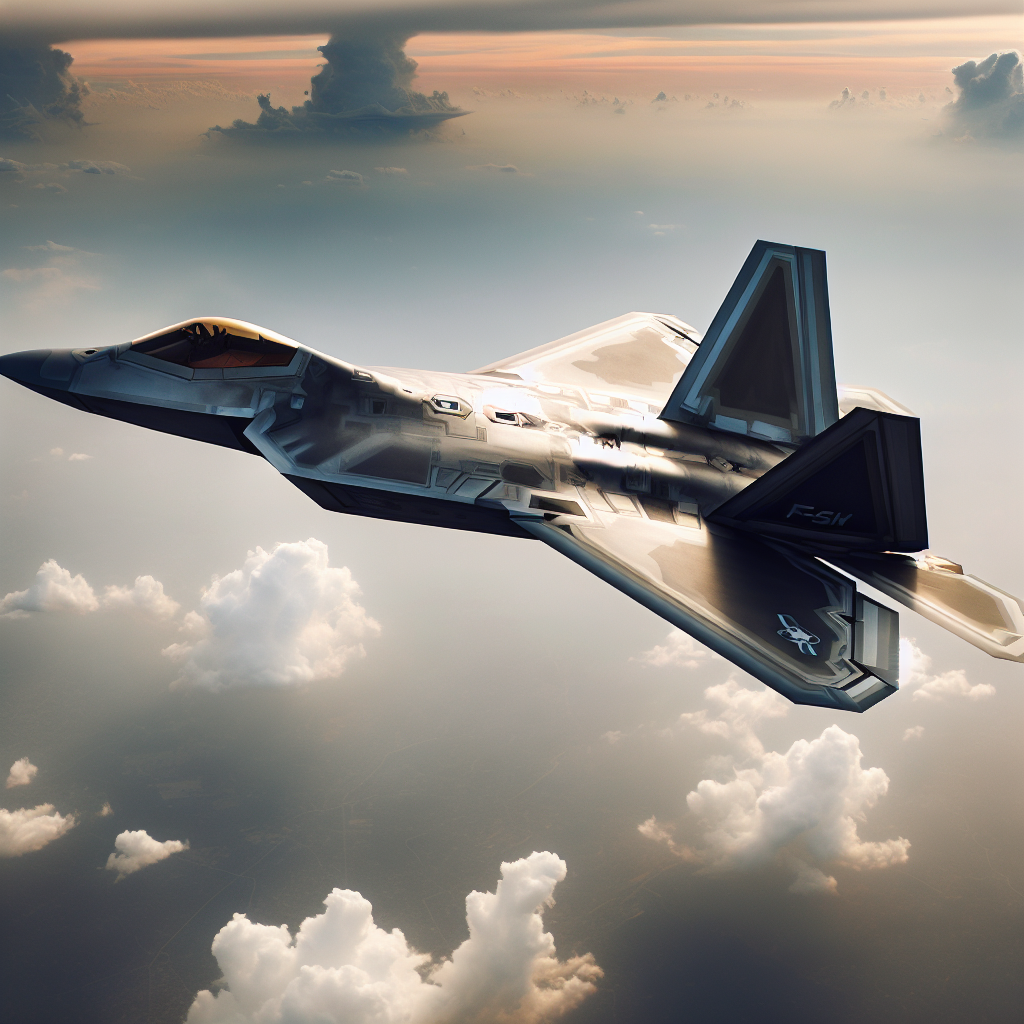The United States Air Force’s F-22 fighter jet is the world’s first mass-produced fifth-generation stealth aircraft. When this aircraft made its maiden flight in 1997, it shocked the aviation industry. Now, after serving for many years, it has become a cornerstone of the US Air Force’s fighter jet fleet and is an essential model for air superiority. However, some may wonder why they have never seen the F-22 fighter jet landing on an aircraft carrier.
According to a report by the aviation news website “Simple Flying,” the US Air Force is developing a sixth-generation fighter jet through the Next Generation Air Dominance (NGAD) program to replace the F-22 fighter jet. However, before its retirement, this aircraft still cannot achieve a remarkable feat – taking off and landing on an aircraft carrier.
People will never see the F-22 fighter jet land on an aircraft carrier for two main reasons. Firstly, it is a matter of pilot skills. US Air Force pilots typically do not receive the training required to land on an aircraft carrier. Despite exchange programs between the Navy and Air Force pilots, most do not participate.
The second reason is a simple physics issue – there are differences between Navy aircraft and Air Force aircraft. Navy aircraft are much lighter, allowing for rapid descent at low speeds without damaging the landing gear. Their lighter weight also means they can take off in a shorter distance.
The F-22 fighter jet is a heavy aircraft, weighing approximately 45,000 pounds (20,400 kilograms). In comparison, the Navy’s F/A-18E/F fighter jet has an empty weight of 32,081 pounds (14,552 kilograms).
Even if the F-22 fighter jet could reduce to a low approach speed of 100 knots, its landing gear cannot withstand such force. In the event of landing gear damage, the F-22 fighter jet may tilt at the end of the aircraft carrier, leading to the pilot ejecting and causing severe damage to the carrier deck.
While the F-22 fighter jet could potentially be modified to land on an aircraft carrier, it would lose most of its advantages because such modifications would compromise its stealth capabilities and significantly increase operational and maintenance costs.
From an economic and engineering perspective, using Navy aircraft is much cheaper and straightforward than retrofitting the F-22 fighter jet.
The US Navy needs a fifth-generation fighter jet capable of landing on aircraft carriers to replace its F/A-18E/F fighter jets. Twenty-four years after the US Air Force received its first F-22 fighter jet, the US Navy finally has the F-35C fighter jet, serving as a replacement for the F-22 fighter jet.
The F-35C fighter jet is a carrier-based version of the F-35 fighter jet, equipped with catapult-assisted takeoff but arrested recovery (CATOBAR) systems, allowing this aircraft to take off and land on aircraft carriers using catapults and arresting gear.
The F-35C fighter jet also features larger wings and control surfaces, providing better low-speed control for landing. After landing, these wings can fold up, adapting to the limited space on aircraft carriers.
Additionally, the F-35C fighter jet addresses the main issue faced by the F-22 fighter jet when landing on aircraft carriers – its landing gear’s inability to withstand impact. The standard F-35 fighter jet weighs 49,540 pounds (22,470 kilograms), even heavier than the F-22 fighter jet. However, the F-35C fighter jet is equipped with reinforced landing gear and a tailhook to engage the arresting gear, crucial for carrier-based operations.
However, these modifications would lower the performance of the F-35C fighter jet. The standard F-35 fighter jet can withstand 9G of gravity during operations, while the F-35C fighter jet can only handle 7.5G.
The NGAD program, initiated in 2014, was originally expected to produce a sixth-generation fighter jet to replace the F-22 fighter jet in the 2030s, but the project is currently on hold.
Until the US Air Force determines which features they want manufacturers to develop for their sixth-generation fighter jet, it is impossible to know if it will be compatible with aircraft carriers.
However, it is worth noting that the US Navy has a unique carrier-based sixth-generation fighter jet program – F/A-XX. The US Air Force’s next-generation fighter jets may not need the capability to take off and land on aircraft carriers.

